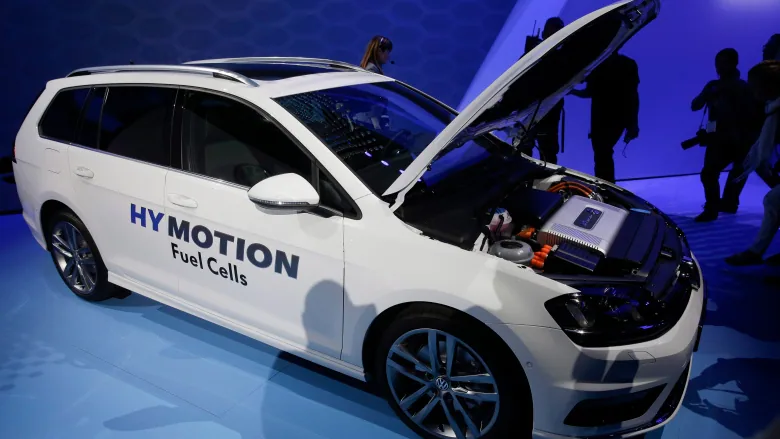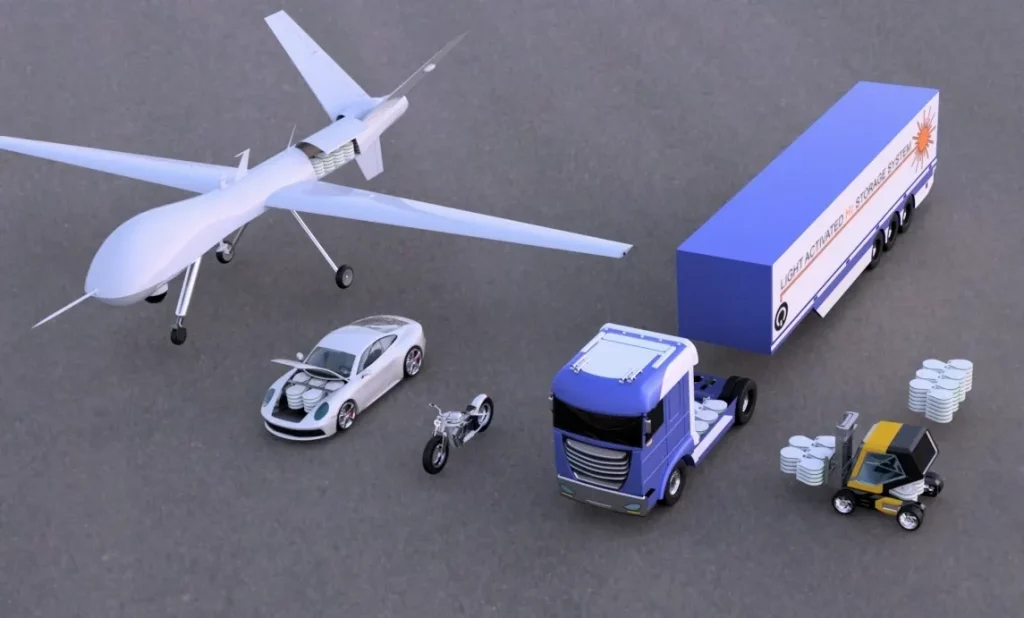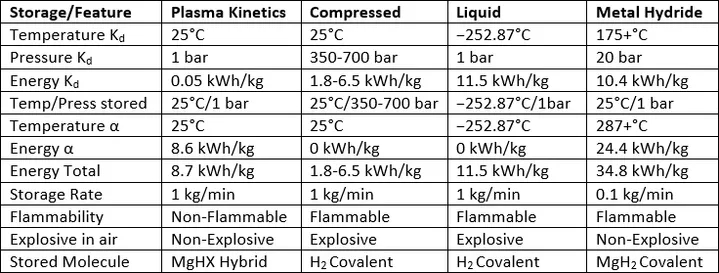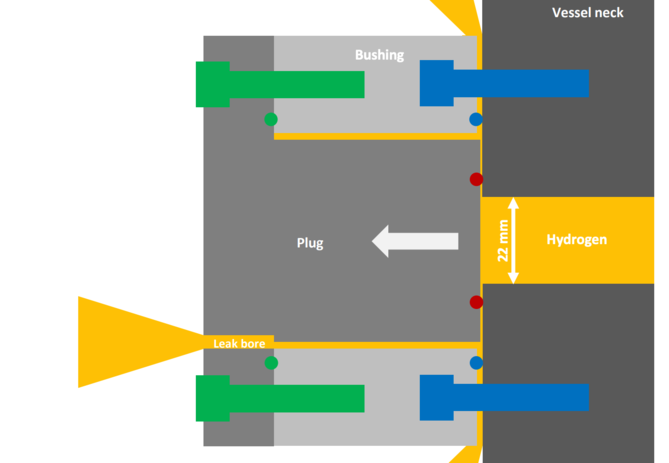
HyMotion is the name Volkswagen applied to its hydrogen fuel cell prototypes. This post is mainly about Volkswagen, a company that was forced to transition to electric vehicles, because of Diesel-gate. The American Environmental Protection Agency (EPA) , had found that Volkswagen had intentionally programmed turbocharged direct injection (TDI) diesel engines to activate their emissions controls only during laboratory emissions testing, which caused the vehicles’ NOx output to meet US standards during regulatory testing. However, the vehicles emitted up to 40 times more NOx in real-world driving.
About the same time, concerns about the danger of global warming led many countries to set up a timeline to phase out fossil fueled vehicles. It is actually a case of too little, too late. The European Union seemed to be heading in this direction, but then on 2023-03-28 it approved legislation ending sales of new carbon-emitting cars by 2035, but made an exception for E-fuel based internal combustion engine (ICE) cars, due to lobbying from Germany. That means ICE cars will continue to be available for sale after 2035, but will need to be fitted or retrofitted with fuelling inducement system technology to prevent the use of fossil fuels. E-fuels are synthetic fuels, regarded by some as carbon neutral because they are produced by capturing CO2, which offsets the emissions from usage. Carbon neutrality is not always the case. In contrast, hydrogen vehicles emit water vapour and warm air, while BEVs have zero tailpipe emissions.
The challenge is that billionaires, and other wealthy people immediately under them in terms of class, want supercar toys, powered by E-fuels. What E-fuel advocates either fail to understand, or more likely are not concerned about, are the dangers of combustion on living creatures, particularly the role of PM 2.5 particulates. In addition, vehicular noise pollution also becomes an issue, as people seek quieter cities, and other places to live.
After the Diesel-gate scandal broke in 2015, Volkswagen saw electrification as a way to redeem itself. New fossil-fueled light vehicles will not be available for sale after 2024-12-31. Many brands, including Hyundai, have already stopped selling ICE vehicles. Volkswagen in Norway will not sell them after 2023-12-31. Already now, almost 90% of light vehicle sales are battery EVs. Hydrogen vehicles are sold, but in insignificant numbers. I am not certain if Norway is following EU regarding E-fuels. However, there will be social pressure exerted on any potential E-fuel users, who will be seen as violators of the Norwegian social contract.
The motivation to write this post, followed an announcement by Volkswagen Group Chief Executive Officer (CEO) Oliver Blume (1968 – ), that the group would transition to hydrogen powered vehicles, after 2030! Previously, 2022-07-03, Blume had supported E-fuels as an effective, complementary solution to making cars cleaner. “Combustion engines can be powered with e-fuels in a virtually carbon-neutral manner. They don’t have to be converted or retrofitted for it. E-fuels can be offered as an admixture or alone at all filling stations. We have to offer an option to the owners of existing vehicles too.” This misses the point that combustion makes a major contribution to debilitating heath issues through the release of PM 2.5 particulates. It also shows his background as CEO of the Porsche division.
In addition, Blume seemed to be more concerned about the economic health of fuel providers. “If produced on an industrial scale, prices of less than $2 per litre could be possible. The important thing is that synthetic fuels are produced sustainably and in places in the world where renewable energy is abundant – then the higher energy input for production is irrelevant. E-fuels produced from water and the carbon dioxide extracted from the air for automobiles, planes and ships have the advantage over pure hydrogen that they can be transported more easily.”
Ballard Power Systems of Burnaby, British Columbia has developed technology for hydrogen fuel cell products, including membrane electrode assembly, plate and stack components. On 2015-02-11 it sold its technology for light vehicles to Volkswagen Group, but retained the rights to this technology for buses and non-automotive uses. Volkswagen introduced its Ballard based technology to the world in the form of four Volkswagen and Audi fuel cell concept vehicles at the Los Angeles auto show in 2014-11.
Since then, Volkswagen has gone on to develop further fuel cell technology. German patent DE 10 2020 119 021 B3 was issued on 2021-07-29 to Volkswagen and Kraftwerk Tubes. It involves a ceramic fuel cell membrane. Allegedly, this is cheaper to manufacture than a polymer membrane, as found on Toyota and Hyundai fuel cell vehicles. It works without any need for an expensive platinum electrocatalyst. Volkswagen states that this will allow them to produce vehicles with a 2 000 km range.
Volkswagen brand’s CEO Thomas Schäfer (1970 – ), said that E-fuels were unnecessary noise, and that hydrogen has some big disadvantages compared to battery technology and that it’s not for Volkswagen, at least not in the next ten years because it is not competitive, especially not for passenger cars, as the fuel tanks take up space in the cabin.
Still earlier, Blume’s predecessor Herbert Diess (1958 – ), criticized H2 fuel cell vehicles, referring to a report from Potsdam Institute for Climate Impact Research (PIK) that concluded hydrogen vehicles are not the way to achieve climate neutrality. Battery electric cars (BEVs) are more sustainable and can be a more environmentally-conscious option for those who are concerned about their car’s emissions.
A move to H2 fuel cells and away from batteries does not seem to be the smartest move, for several reasons. While there are a certain number of early adapters, most of these interested in alternative vehicles have already taken the EV leap/ plunge, finding it a more appropriate solution for themselves than a H2 fuel cell vehicle. This is mainly an operating cost issue, but also a space issue, but increasingly a model availability issue. There are few fuel cell vehicle model choices. EVs have become dominant, with models suitable for a variety of use cases. People are unlikely to reassess their preference for EVs, especially considering that the operating costs of a H2 vehicle are several times higher than that of an EV. Of course, there are others who are brand loyal, irrespective of how stupidly the company they support acts. In Norway, when an EV needs charging, it is typically plugged in at 22:00, when energy prices are lowest. By morning, it is “fully” charged, typically to 80%, to preserve battery life.
A key word is convenience. In much the same way that workers find it more convenient to work at home, and are reluctant to return to the office, most electric vehicle operators find it more convenient to charge at home, and are reluctant to return to a fueling station. Home charging is a habit that grows quickly, especially when commercial high-speed charging is expensive, and offers no to few advantages. H2 is even more expensive.
A previous post discussed the colours of hydrogen, the assorted types of H2 available, based on how it is produced. About 95% of that H2 is methane based, meaning that it is essentially a fossil fuel, that produces CO2. Other types/ colours of H2 are more environmentally friendly, but with the power produced costing about three times more than electrical power from other sources such as wind, solar or hydro. Given a choice, I doubt if consumers would be willing to pay this for this fuel, given the availability of cheaper, more environmentally friendly alternatives (read: BEVs).
In 2023-06, three H2 stations in South Korea received contaminated black hydrogen, produced using steam methane reformation (SMR) — from Korea Gas’ Pyongtaek facility. Proton exchange membrane (PEM) fuel cells used in hydrogen-powered cars need H2 with a purity of 99.9% to safely operate. SMR produces hydrogen (H2), carbon monoxide (CO) and carbon dioxide (CO2). A water-gas shift reaction is usually turns the CO into CO2, while the CO2 is removed using pressure-swing adsorption. In this particular case, some CO or CO2 may not have been properly removed. These impurities can cause irreversible damage, necessitating the replacement of the PEM and other components. For example, CO adsorbs strongly on the platinum electrocatalyst, and CO in hydrogen fuel degrades the performance of the polymer electrolyte fuel cell (PEFC).
On 2019-16-10, an explosion destroyed a Uno-X hydrogen fueling station at Sandvika, near Oslo, Norway. This was covered in one post initially, then followed up in a second post, some two weeks later. More recently on 2023-07-18, hydrogen buses were being fueled at a Golden Empire Transit facility, in Bakersfield, California when one of the buses caught fire. One bus was destroyed and the dispensing portion of the hydrogen fueling station damaged.
In the world there are about 625 public hydrogen fueling stations, according to one source. At the top of the list are: Japan with 175, USA with 107, Germany with 92, China with 88 and France with 40. In Canada there are 8, of which 6 are located in British Columbia (Burnaby, Kelowna, Marpole in Vancouver, North Vancouver (2) and Victoria). There is also one in Mississauga, Ontario and another in Quebec City, Quebec. In Scandinavia, Norway and Denmark have 7 each, Sweden has 5, Iceland has three, while Finland has none. There is actually one located 124 km (1h 51m driving time) south of Cliff Cottage. It is the most northerly in Norway. Except, a Norwegian source states that there are only three H2 fueling stations currently operating in Norway! Interested readers can take it upon themselves to find the correct number of H2 fueling stations in the world. It is probably over 500, but less than 1 000. Currently, one source indicates that there are about 115 000 gas stations in the USA.
Ammonia (NH3) has also been suggested as an energy bearer. This will not be discussed here, except to reference a source for further information.
If Blume is wanting to shift to fuel cells to increase range, he should be aware that researchers at Pohang University of Science & Technology in China have found a way to multiply the energy storage of a battery by ten. An anode stores power when charging and releases it to provide power. Currently, most modern lithium batteries use an anode made of graphite. Other materials, like silicon, have a higher energy capacity, but researchers have been unable to create a stable battery with a silicon anode. This is because the reactions inside the battery cause the silicon to expand dangerously. A research team has created a binding material that will keep a high-capacity silicon anode from expanding.
Currently, the specific energy of a lithium-ion battery is 100–265 Wh/kg (0.360–0.954 MJ/kg). Our Buzz has a 80 kWh battery providing a theoretical 400 km of range. Using the above data, the battery mass should vary from 800 kg to 302 kg. Personally, I see little need for this range to increase by a factor of 10 to 4 000 km. Even the most enthusiastic of users would probably be content with a 2 000 km range. Normal mortals would probably willingly accept 1 000 km,
If the specific energy of a battery increases to 1 to 2.65 kWh/kg (3.6 – 9.54 MJ/kg), then the mass of a battery with a 1 000 km range is probably somewhere between 200 and about 75 kg. A Volkswagen Transporter T6 2.0 TDI has a fuel tank capacity of 80 liters, with fuel consumption per 7.5 liters (combined) per 100 km, or 75 litres for 1 000 km range. The density of diesel is about 0.85 kg/ litre, which means that 75 litres has a mass of almost 64 kg. This does not take into consideration the mass of the storage container. This means that the mass of an EV battery is approaching parity with the mass of diesel.
In 2021, Equinor, Aire Liquide and Eviny started Project Aurora, at Mongstad, Norway. Its goal was to construct a Norwegian liquid hydrogen manufacturing facility for maritime shipping. They estimated that manufacturing costs would likely be ca. US$9.30 per kg. That project was permanently abandoned in 2023-03, because it failed to attract customers. Liquid hydrogen would also be needed for aviation fuels. However, this price is three times the cost of Jet A fuel. Transportation of hydrogen is a major challenge. The US Department of Energy states that a single tanker of gasoline contains 14 times the energy as a tanker of hydrogen. Thus, for both maritime and aviation uses, it may be appropriate to produce H2 near the facilities where it is being used. This situation may also apply to vehicle H2 fueling stations.
It is useful to compare energy pathways. Here, two such pathways will be examined. The first looks at the use of electricity to produce liquid hydrogen, which is used to produce electricity to power, say, an aircraft or ship. Start with 10 MWh of electricty. Turning water into hydrogen is about 70% efficient. There is about 7 MWh of chemical energy in the resulting hydrogen. Compressing, storing, transporting and distribution hydrogen uses another 10%, resulting in 6.3 MWh of available energy. Liquifiction is about 66% efficient, resulting in4.2 MWh of energy. Boil off uses another 5%, leaving about 4 MWh of energy. Burning hydrogen in a jet engine is about 50% efficient at optimum altitude and speed, but is closer to 40% efficient gate to gate. Thus 10 MWh of green electricity provides 1.6 MWh to move an aircraft.
The pathway for a battery aircraft or ship from wind differs significantly. From wind farm to the grid or a battery, it’s about 90% efficient. That results in 9 MWh of energy being available. There is an addition 10% energy loss using electric motors on the aircraft or ship. These would have about 8 MWh of energy available. This is five times the energy available on the hydrogen pathway.
Despite Volkswagen being the automotive brand that I have bought most frequently, I am not a loyal customer. The VW Buzz we currently drive will most likely be our last vehicle purchase. I appreciate having the opportunity to drive a quiet EV, that avoids combustion, and was delivered as a carbon neutral vehicle. I find the comments made by Volkswagen Group CEO Oliver Blume irritating, but not nearly as irritating as some of those made by Tesla CEO Elon Musk.
The final word on this subject will be given to Frank Welsch, Member of the Board of Management of the Volkswagen Passenger Cars brand with responsibility for Technical Development:
"Science is largely in agreement on this issue, as several recent studies have shown. The Federal Ministry for the Environment, for example, assumes that hydrogen and synthetic fuels, so-called e-fuels, will remain more expensive than an electric drive, as more energy is required for their production.The Agora Verkehrswende (traffic transformation) initiative also points out that hydrogen and e-fuels do not offer ecologically sound alternatives without the use of 100 percent renewable energies, and that, given the current and foreseeable electricity mix, the e-car has by far the best energy balance. In the view of the Fraunhofer Institute, synthetic fuels and drive technologies such as hydrogen in combination with the fuel cell will indeed play a role – but not so much in the passenger car sector, but rather in long-distance and heavy-duty traffic, as well as in rail, air and sea transport. These segments will only be converted in later phases of the energy turnaround, i.e. beyond the year 2030, and closely linked to the expansion of renewable energies."
"In fact, hydrogen-based fuel cell technology has one crucial disadvantage: it is very inefficient – both in terms of efficiency and operating costs. This is also confirmed in detail by a Horváth & Partners study, comparing both types of drive for e-cars from the customer’s point of view."





